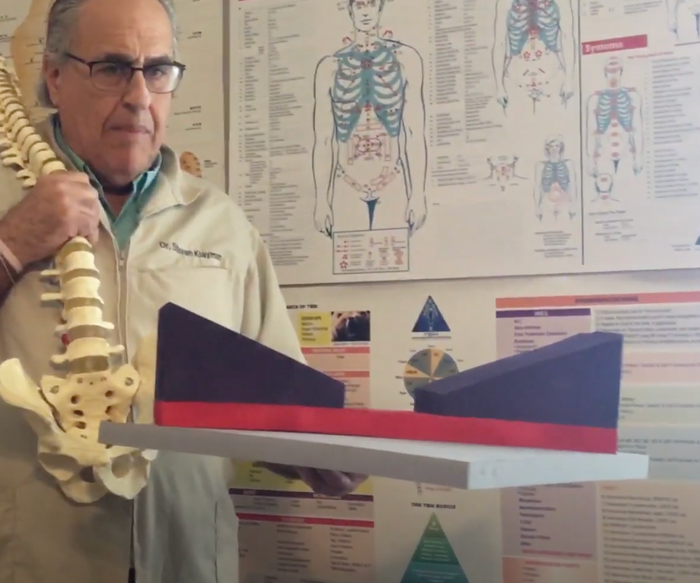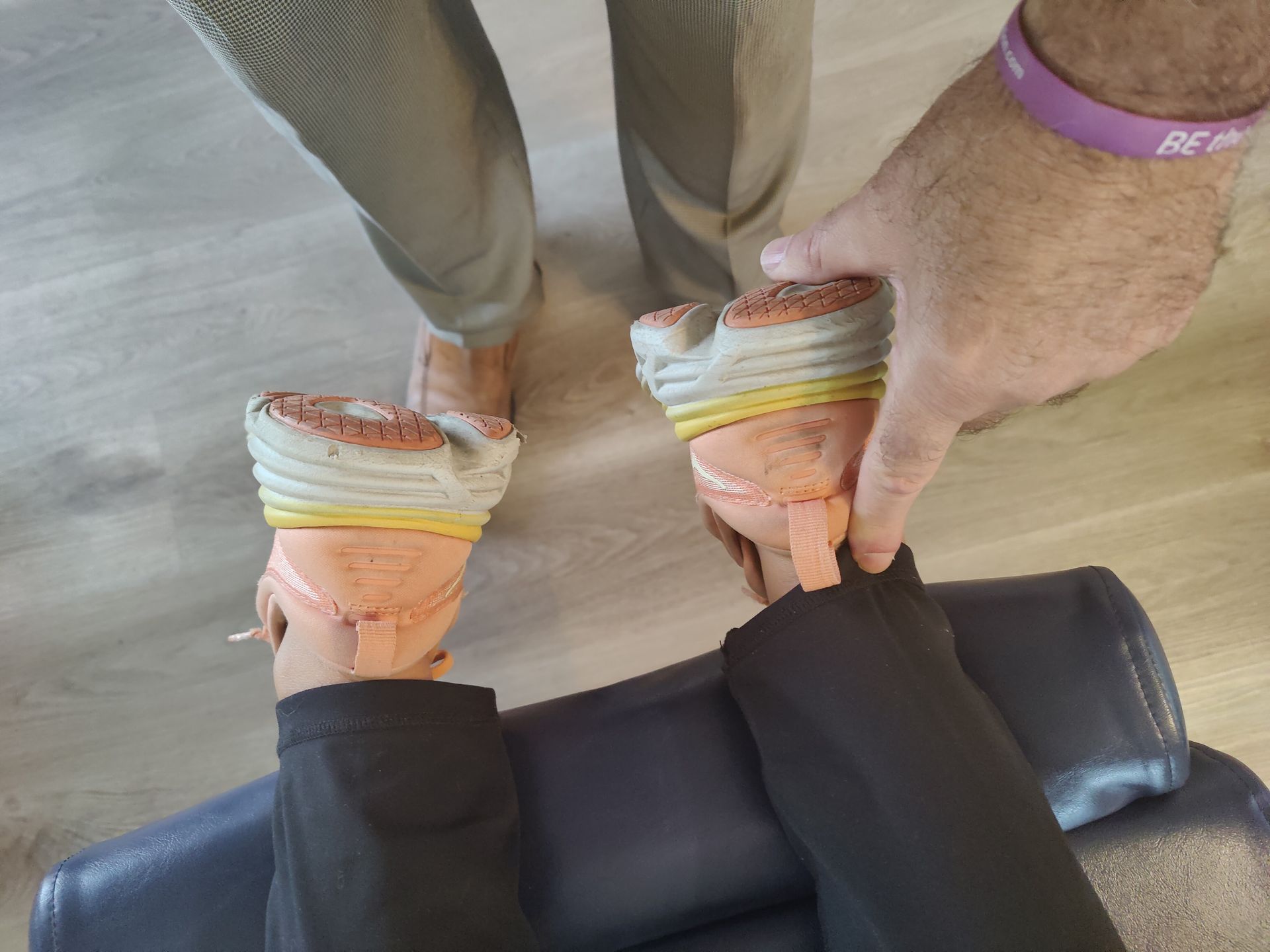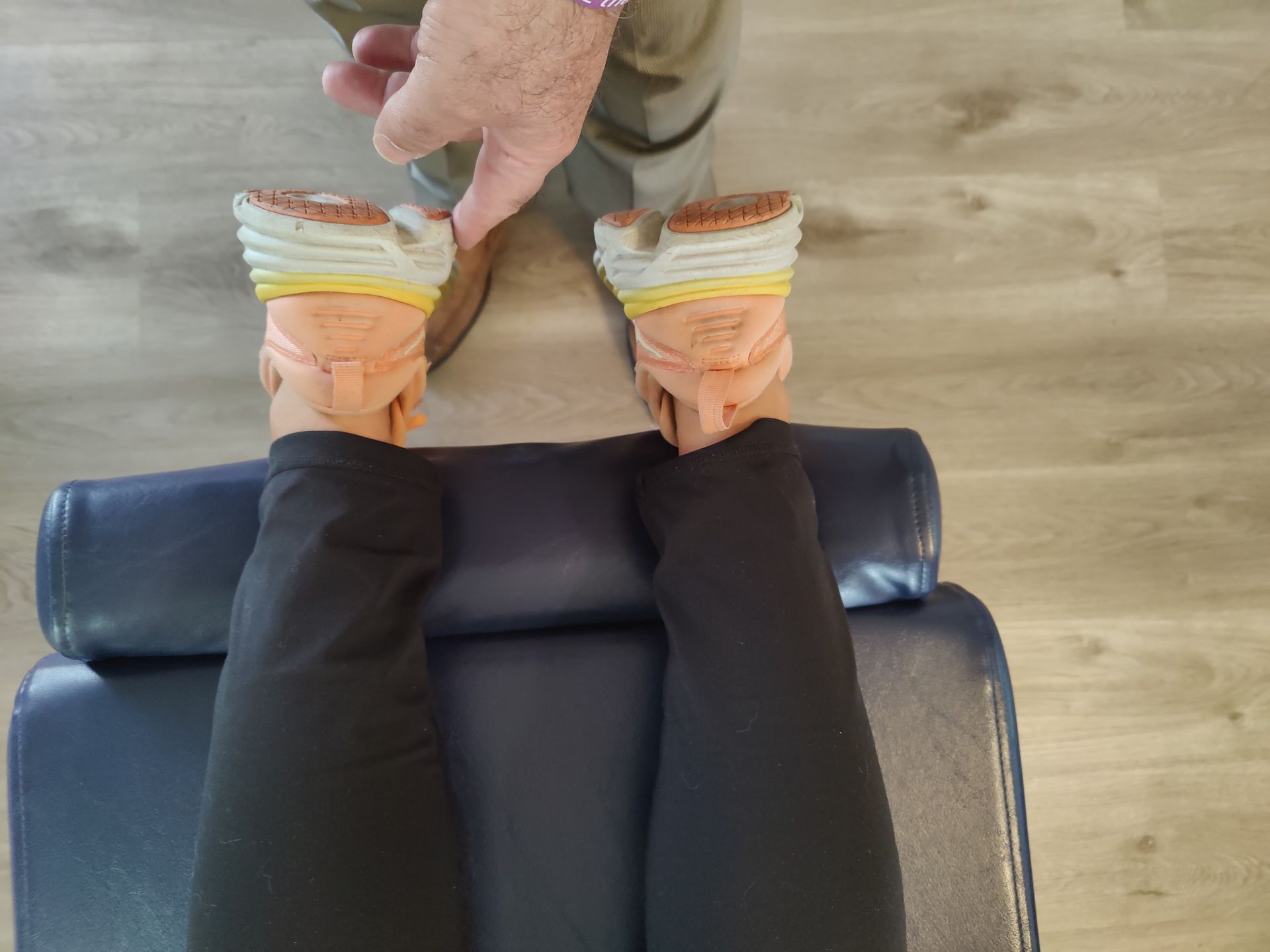Restore the Balance of the Hips
The Hip Balancer
The purpose of putting this website together is to protect and save you from perhaps unneeded surgery. Low back pain and buttock pain and leg pain or numbness or tingling can have numerous causes. Understanding the anatomy of the body is essential in making the decision of whether to undergo surgery or not. Often times the diagnosis of a bulging disc on MRI and the occurrence of low back pain or buttock pain or sciatic pain do not match up.
If we did an MRI on 100 people with no low back pain or sciatic pain or sacroiliac joint pain we would find approximately 30% of them have bulging discs. But they have no pain or discomfort. What that means is a bulging disc does not always cause back pain.
So even though a bulging disc is present we must find out if that's the real cause of the pain. And if it is can that disc be sucked back into the disk space and prevent the surgery.
In the past 16 years of my practice I have seen hundreds of patients with diagnosis of low back disc bulge. Of all of those patients only three actually needed surgery. If the disc is fractured off and laying loose in the spinal canal surgery is the only answer. But frequently that does not occur.
The purpose of this website is to educate you on the anatomy of the low back so that you will have the confidence to try conservative type treatments before you allow anybody to operate on you. Many surgeries are prevented with conservative treatment either through chiropractic care or acupuncture.
The Chiropractic profession had very little to offer in terms of at home care. With the invention of the hip balancer (patent pending) many low back pain cases can be handled with just a few visits or even no visits to the office and maintained at home.
We had nothing in the chiropractic community that the patient could do for themselves to restore the balance of the hips. Until now.
Watch the following videos and understand the possibilities for alleviating your low back condition.
Have you ever struggled with chronic back pain, only to discover the real issue is hidden in your hips?
Misaligned hips are a common yet often overlooked cause of discomfort. They can lead to pressure on your joints and inflammation, contributing to back pain. Whether caused by a fall or years of heavy lifting, misalignment can create noticeable imbalances, such as one leg appearing shorter than the other, and even stretching the ligaments that support your hip joints.
Dr. Steven Klayman’s innovative Hip Balancer offers a solution to realign your hips and alleviate pain at its source. This device is designed to restore proper alignment, relieve discomfort, and improve overall mobility. To learn more about how the Hip Balancer works, check out the follow-up video where you can perform a simple leg check to see if it could be the key to your relief!
The use of this device is exactly the way I have treated many hundreds of patients in my office for over a decade.
It is so easy to use once you know which is the short leg.
How to Do a Leg Check at Home
Are Your Hips Misaligned? Here's How to Find Out!
Here's How to Find Out! Ever wonder if your hips are causing your back pain? A leg check can point you in the right direction. Simply lie down on a bed or table with your legs extended over the edge, and have someone compare the length from your heels to the base of your shoes. Keep your head straight and avoid any rotation. If one leg is shorter, it could signal a hip misalignment—and the Hip Balancer might be just what you need to fix it! Have your chiropractor check it.
If both legs are the same length,
this device is of no value to you.
Unlock Lasting Hip Relief: Why Realignment Beats Anti-inflammatories Every Time
But if there is a leg length discrepancy that tells us that the sacroiliac joints, which are located about one to two inches from the midline in the middle of your butt, are being stretched. That stretching of the sacroiliac ligaments causes inflammation and pain. Anti-inflammatories do nothing to restore the integrity of the hip alignment.
Only by realigning the hips will the inflammation of the sacroiliac ligaments which hold that joint together be relieved.
In addition one of the signs and symptoms of a pelvic imbalance is groin pain. The twisting of the pelvis causes the inguinal ligament which goes from the hip pointer to the pubic bone to get stretched and it too becomes inflamed.
Properly lying on the hip balancer will relax both the inguinal ligament in the front and the sacroiliac ligaments in the rear. Sometimes it has to be done multiple times throughout the day for it to stay in place. That's why it's often necessary to go see the chiropractor three times a week for several months. He's trying to get the hips to stay in position.
Once you have the hip balancer you can do it two or three times a day and within a week or two it should stay in place. Then only weekly or bi-weekly maintenance is necessary.
In the rare case of the hips not staying aligned, your chiropractor will determine if the "one-shoe-walk" is beneficial for you.
In my office I tell my patients to wear only one shoe, on the short leg side, while walking for 20 minutes. Your chiropractor will determine if your hips are staying in position.
The Hip Balancer Used Correctly
"I'm over at my friend Julia's house and she has the hip balancer and she said while I was here her back hurt. So what happened?" "Well, I had been using it wrong so I asked Steve, I said, my hip has been hurting for quite some time now and so he said show me how you're using it well it was incorrect so he put it in the correct position and I laid on it for what 10 seconds and the pain is gone, it was amazing." How do you like it" "I love it"
Two Common Causes of Low Back Pain
The conversation is between a chiropractor and a patient, who came in with severe back pain. The chiropractor diagnosed Alisa with misaligned hips and facet jamming, which were causing the pain. After realigning the hips and providing the Hip Balancer device, Alisa is now feeling much better and is able to walk and sit comfortably.
Exploring Alternatives to Low Back Surgery: Understanding Low Back Pain
Before You Go Under the Knife: Why Back Surgery Isn't Always the Answer.
Relying on an MRI to diagnose low back pain and rushing into surgery for a bulging disc might be a mistake. Many people with bulging discs feel no pain at all, and surgery isn't always necessary. Other causes, like spinal subluxation or facet syndrome, can mimic disc pain and are often treatable with chiropractic care. Plus, with the high failure rate of back surgeries—there’s even a code for "failed low back surgery syndrome"—it’s worth exploring non-invasive options first. Consider chiropractic care before making surgery your last resort.

Hip Balancer: $99 + $25 S/H = $124
Order 2 for $198 + $25 S/H = $223
Order 3 for $287 + $25 S/H = $312
Order 4 for $350 and free S/H
Wholesale Pricing Available
Contact Us for orders of 5 or more
Personal Consultation
A personal consultation with Dr Klayman
Fee is $150.
Consults usually last up to 15 minutes.
Step 1. You should have performed the leg length check before the consultation.
Step 2. Please fill out this
INTAKE FORM


